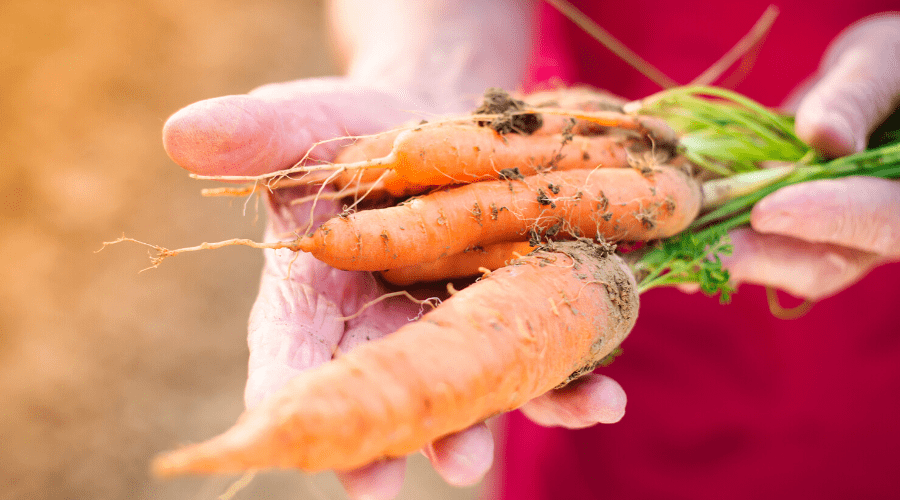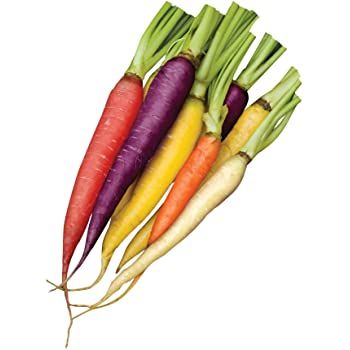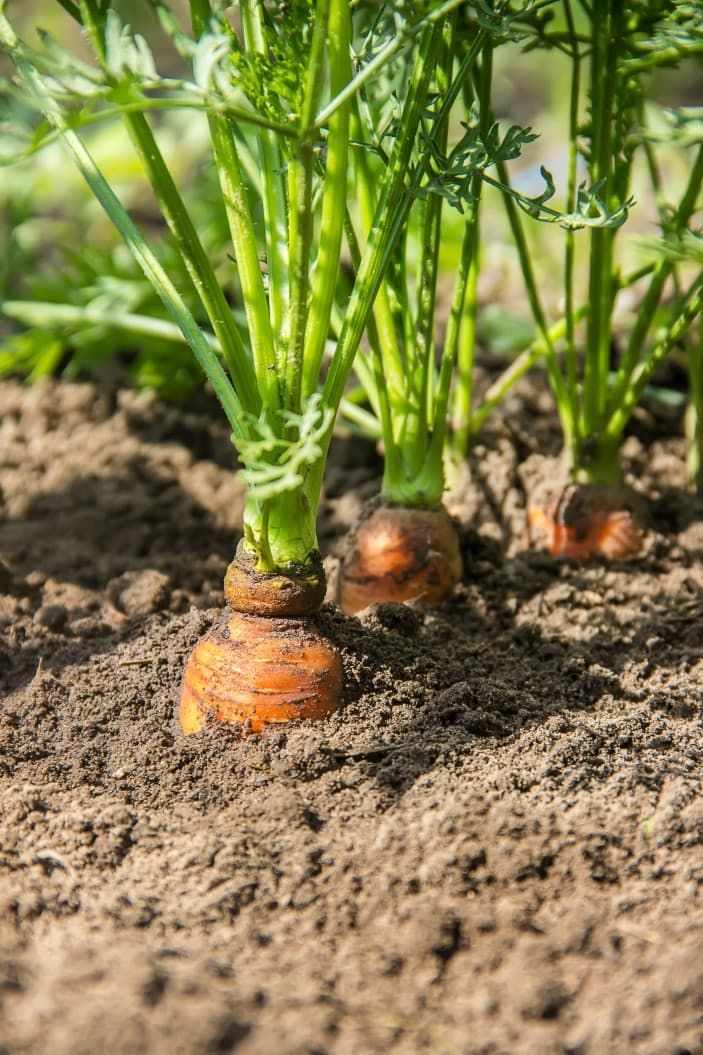What’s up doc?
An endless supply of delicious, crunchy carrots is not just for cartoon bunnies anymore. Using this all-encompassing guide, you can learn how to grow your own carrots--and keep growing them--for years to come.
Carrots are a delicious, nutritious, versatile veggie. They have beneficial vitamins and minerals, including biotin, potassium, vitamin A, K1, and B6. They promote good vision, strong immune functioning, steady growth and development, bone health, blood pressure control, and strong metabolisms.
But growing them can be difficult. Well, rather, it would be difficult if you hadn’t stumbled upon this bevy of carrot knowledge collected by an experienced, carrot-growing guru.
Lucky you!
This guide will break down the carrot growing process, different growing methods, harvesting methods, and carrot types.
What You Will Need to Grow Carrots
- Carrot Seeds or scraps
- Soil
- Water
- Fertilizer (optional)
- Garden or container
- Gardening tools
Alternate Method: How to Grow Carrots From Scraps
You can eat your carrots and grow them too. Using carrot scraps, you might otherwise throw away, you can grow new carrots. Let's be clear: this is not an easy way to grow carrots, and if carrots are what you want, just plant new seeds as described below. From scraps, it will take up to two years for the carrots to grow roots then grow new seeds.
That said, it is a great way to grow carrot greens, which are a bit bitter but are perfectly tasty in a salad.
Simply place a carrot top in a bowl or saucer, with its top side down and leaves in the air. Put an inch of water in the bowl, leaving the top exposed. Place the bowl on a sunny window sill and replace the water every day, otherwise the carrots might rot. You can harvest the greens whenever they get big enough.
Alternatively, you can plant the carrot tops in soil, with the top leafy-end sticking out slightly and regular watering to keep the soil moist but not saturated. Soil-grown carrot greens will sprout faster than using the water-only method, but it's a little bit less magically amazing.
Garden or Container?
You can grow your carrots in a garden or in a container. Short, round carrots, like Little Finger carrots, thrive in containers, while longer ones, like Danvers carrots, grow much better in the ground.
Choose a container that is at least a foot deep and make sure it has holes for drainage. If it doesn't, make your own holes in the bottom of the container.
For more information about growing vegetables in containers, check out this article.
Best Carrots to Grow
Bolero Carrots
Bolero carrots go deep, growing to be around 7-8 inches long. They are the Wolverine of carrots, resisting most pests and blights. These carrots are bright orange, sweet, and crispy.
Danvers Carrots
Danvers carrots look like the traditional carrots we all know and love. They grow to be about 6-8 inches long. They have a dark orange color and are capable of growing in heavy soil.
Cosmic Purple Carrot
If you love the fun colors of heirloom carrots, you will appreciate the purple skin and bright, orange flesh of Cosmic Purple carrots. They grow to be about 6-7 inches long and are sweet and crunchy.
Thumbelina Carrot
One of the quickest carrots to grow, Thumbelina carrots take less than 2 months to mature. They are short and round, so this is a great carrot to grow in a container. They can also grow in heavy, rocky soil.
Little Finger Carrots
Little Finger Carrots are another great container carrot. They only grow to be about 4 inches long. They grow quickly, maturing fully in two months.
Where Do Carrot Seeds Come From?
Yes, they come from hardware stores, online suppliers, and so on, but where do they really come from? After all, the flesh of carrots doesn’t have any seeds in it.
Carrot seeds don’t come from within carrots, they come from the flowers of carrots. Carrots are a biennial plant, so if you leave them in the ground past their growing season, in the next season they will flower and produce seeds. You can then use those seeds to grow more carrots!
Burpee Kaleidoscope Blend Carrot Seeds
- 1,500 seeds
- Wild colors
- Harvest in 80 days
How to Grow Carrots
Step One: Plan
The first thing you need to determine is when you want to grow carrots.
Carrots grow best in warm-cool temperatures, like those in late fall and early spring. However, you should plant carrots before their growing season.
For Spring carrots, plant them one month before the last frost. Carrots taste better after a frost because the frost requires them to store energy in the form of sugars in their roots. Plan to harvest the carrots before it becomes too hot because intense heat can make carrots too fibrous.
For Fall carrots, plant them at the end of the summer when temperatures are cooling down. Carrots like lots of sunshine so make sure you pick out a growing spot with sun exposure. Decide whether you want them in a container or garden by taking into account what kind of carrots you want to grow.
Pro Tip: You might want to companion plant beans with carrots since carrots produce nitrogen, which helps beans grow.
Step Two: Ready Your Garden
Make sure your garden space is clear of debris, like trash, rocks, and weeds, all of which it may obstruct growth, leading to misshapen carrots.
Prepare your garden or container with a carrot-friendly soil. Carrots grow best in loam because heavy soils can lead them to mature slowly. The soil should be loose, airy, and sandy.
Till and fertilize the soil in preparation for the carrots. Use a light, potassium-rich, low-nitrogen fertilizer. Nitrogen-rich fertilizers can also lead to misshapen carrots because they promote foliage growth rather than root growth.
Your space should preferably be one with full sunlight, although carrots can still thrive with some shade.
Step Three: How Deep to Plant Carrots
Time to plant your carrots!
Plant the carrots 3 inches apart in rows that are about 1.5 feet apart. Plant the seeds within the soil about ¼ -½ inch deep. Don’t worry if you don’t get it perfect.
Because carrot seeds are so small gardeners often have to go back through and resow their carrots.
Gently add some mulch on top of the carrots. This will protect their roots from the sun and help them germinate more quickly.
Pro Tip: Try covering the carrots with vermiculite. This will help the carrots germinate quicker by preventing a crust from forming over the carrots.
Step Four: Watch them Grow!
Now it’s time to let your carrots grow.
Keep your carrot’s garden free of weeds, especially when they are small. Make sure that you water them frequently, but shallowly. Water the carrots 1 inch to start, and then as they grow and mature, 2 inches. It is important that you make sure the soil is moist as much as possible.
Carrots can take 2-4 months to fully mature. It may be a few weeks before you see leaves but don’t worry! Carrots are just slow to germinate.
When the seedlings are an inch tall thin them out so that they are 3-4 inches apart by snipping their tops with scissors.
Step Five: Harvest
You can harvest carrots that are more than a few inches long, around finger sized. The smaller the carrot, the tastier it will be!
Check the size of your carrots by tenderly removing dirt from their top. Slowly and gently remove them from the soil when you harvest. You can continue to sow seeds every few weeks.
Pro Tip: You can start growing carrots after the last frost and continue to plant them throughout the Fall.
Step Six: Eat Them!
Your carrots may not be shaped like ones from the grocery store, but they will definitely taste better. Whether you are adding them to a soup, salad, stew, or eating them raw, carrots are a versatile veggie!
Conclusion
Carrots can be challenging to grow, but hopefully, this guide will make the process a little easier. They make take a while to grow and can be temperamental, but the delicious homegrown carrots that you harvest will make it all worth it.
The only downside? You will never want to go back to buying store-bought carrots again!
Did you enjoy this tutorial? Let me know how these carrot growing tips work out for you in the comments, and if you liked this article, please share it!





